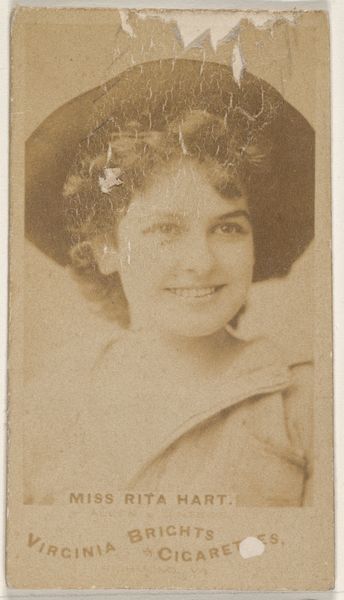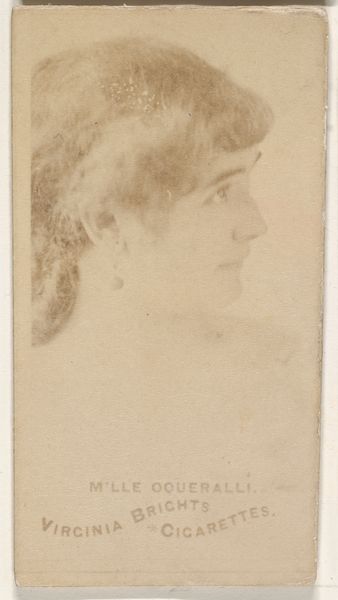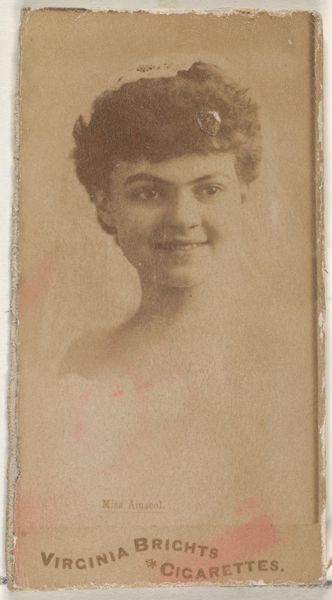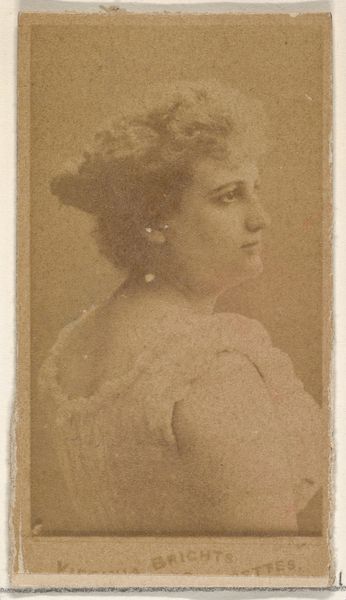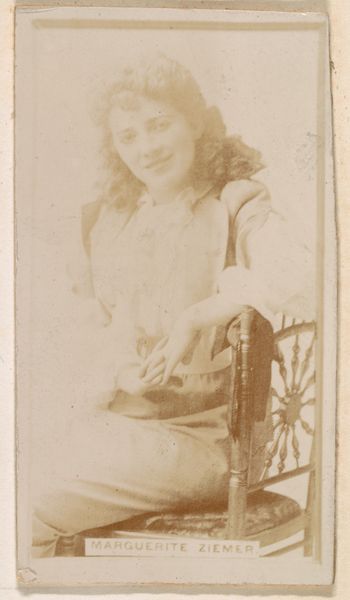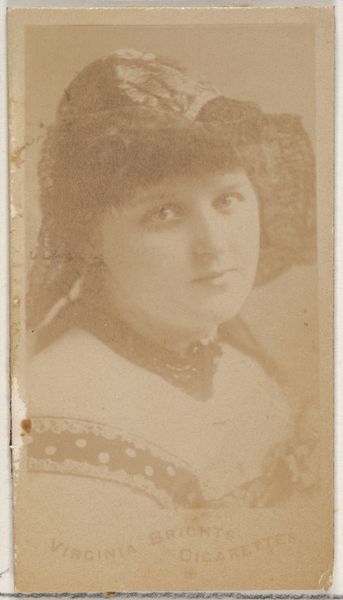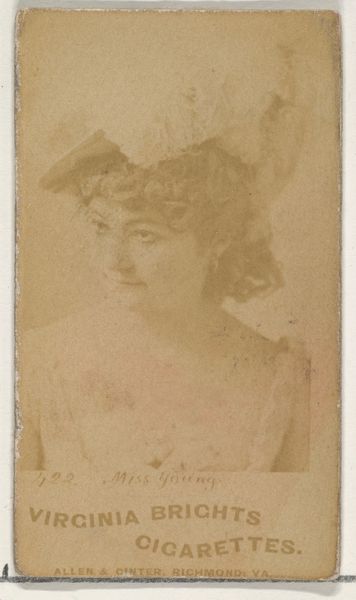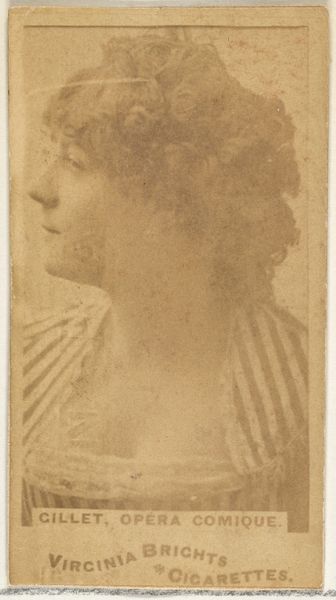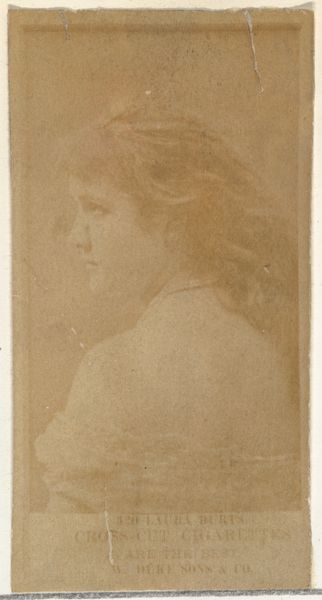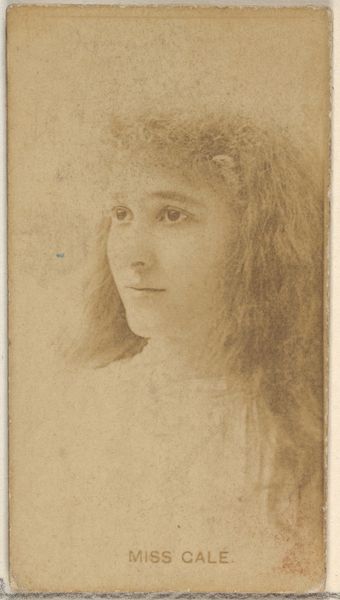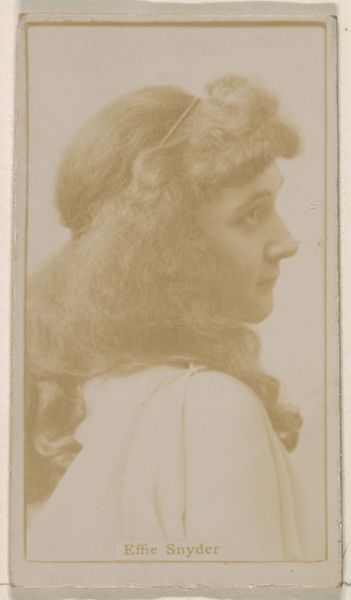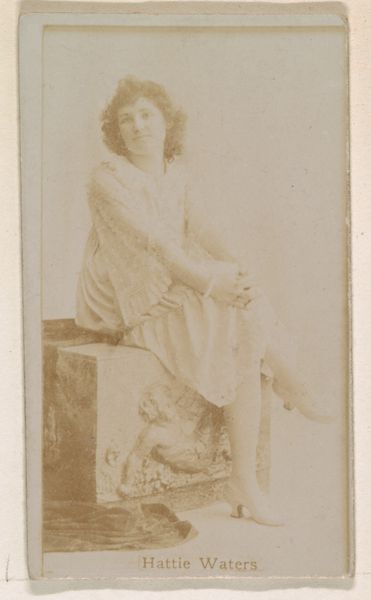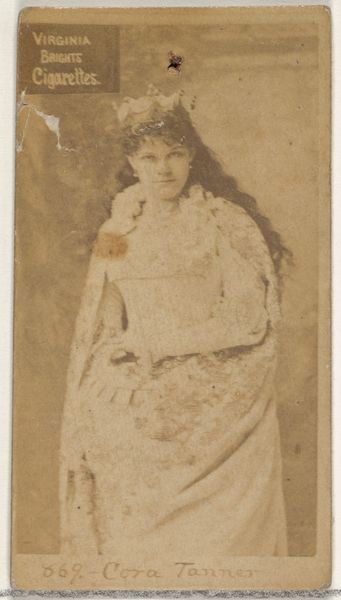
Ida Mulle, from the Actors and Actresses series (N171) for Gypsy Queen Cigarettes 1886 - 1890
0:00
0:00
drawing, print, c-print, photography, albumen-print
#
portrait
#
drawing
# print
#
c-print
#
charcoal drawing
#
figuration
#
photography
#
albumen-print
Dimensions: sheet: 2 11/16 x 1 3/8 in. (6.9 x 3.5 cm)
Copyright: Public Domain
Editor: Here we have “Ida Mulle, from the Actors and Actresses series (N171) for Gypsy Queen Cigarettes,” dating roughly from 1886 to 1890. It's a small albumen print, essentially a photograph meant for commercial purposes. Given that, I’m struck by how much it seems to capture not just Ida Mulle's likeness, but also a sense of the era's ideals around female beauty and performance. How do you approach something like this, which seems both artistic and purely functional? Curator: I see it primarily as a document of labor and capital, specifically the commodification of celebrity in the late 19th century. We have to consider the context of mass production – how photography enabled images to be circulated on a scale never before possible. The albumen print itself speaks to a whole network of labor: from the sourcing of materials to the factory production of the cards, to the very act of distributing them with cigarettes. Who profited, and who labored? That's what interests me. Editor: That's interesting. So, you're focusing on the cigarette company, Goodwin & Company, and their process, rather than solely on Ida Mulle or the photographic artistry itself? Curator: Precisely. Mulle's image here becomes a raw material, used to move product. Think about it: cigarette cards were inserted into packs to stiffen them, to advertise, and to entice repeat purchases through collecting sets. The image becomes part of the overall commodity. Also consider the waste: how many of these images were discarded, lost, or otherwise devalued after their initial purpose was served? Editor: It's a far cry from thinking of art as something precious and enduring. This really emphasizes its ephemeral nature. Thinking about it this way has certainly changed my view; the art isn't necessarily in the image itself but in this complex system of production and distribution. Thanks for highlighting that! Curator: My pleasure. Remember, analyzing the social and economic processes reveals so much about our relationship to both art and consumer culture.
Comments
No comments
Be the first to comment and join the conversation on the ultimate creative platform.
